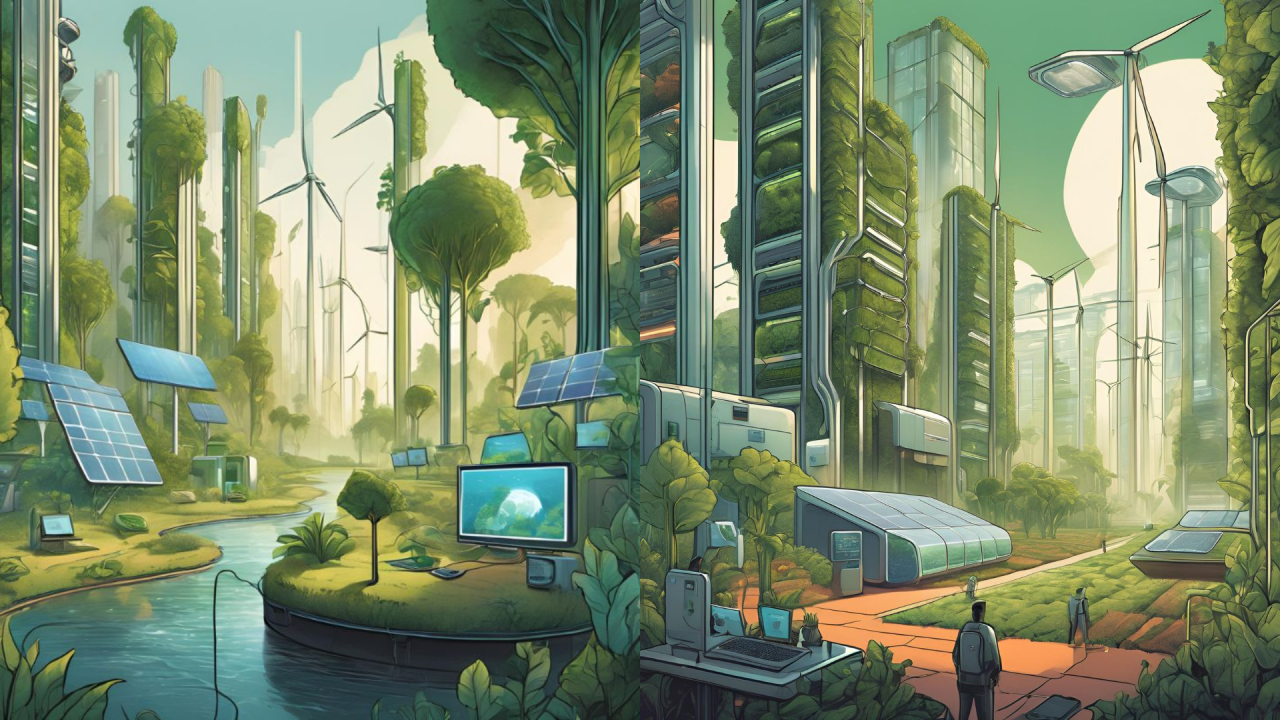What Is Sustainable Technology?
Sustainable technology aims to improve the environmental compatibility of societies, companies, and households. It involves reducing the carbon footprint of various tasks and using more environmentally friendly production techniques. Ideally, it achieves both. Sustainable technologies permeate all levels of green projects and strategies. From “greener” phone companies like Fairphone to large-scale applications in agriculture and urban planning, sustainable technologies are having a major impact on our world.
Sustainable Technology Examples
Consumer Technology: Fairphone A prime example of sustainable technology in consumer electronics is Fairphone. This company manufactures smartphones with removable batteries to reduce e-waste and uses 70% recycled or “fair” materials such as recycled aluminum, tin, rare earths, nickel, zinc, copper, magnesium, indium and plastics. Fairphone also offers extended software support to ensure that the phones can be used safely for many years. In August 2023, Fairphone described its latest model, the Fairphone 5, as the “most advanced phone in the world right now.”
Agriculture: Precision Farming In agriculture, sustainable technology optimizes water consumption and crop yields. For example, sensors monitor water levels and plant health, while drones with cameras and AI analyze the condition of the plants and apply fertilizer. This technology reduces the carbon footprint compared to conventional tractors and prevents soil compaction caused by heavy machinery.
Architecture: Innovative Building Systems In architecture and housing, sustainable technologies include systems that collect rainwater for flushing toilets and electrochromic glass that adapts to external conditions, reducing the energy consumption of air conditioning. Solar panels, which will be installed in 3.7% of homes in the US by 2020, are another well-known sustainable technology. In addition, recycled materials are increasingly being used for building insulation.
Healthcare: Electronic Health Records and Telemedicine The healthcare sector is benefiting from electronic health records (EHR), which eliminate the need for paper documents and facilitate the exchange of information between healthcare providers. Telemedicine reduces carbon emissions by reducing the need for for physical travel, though its over-reliance remains a topic of debate.
Fashion: Sustainable Materials and Virtual Try-Ons
The fashion industry, notorious for its environmental impact, is embracing sustainable technologies such as virtual try-on services that reduce returns and waste. In addition, environmentally friendly alternatives to polyester such as bamboo, hemp, TENCEL and soy cashmere are gaining ground in clothing production.
City Infrastructure: Smart Street Lighting In urban areas, intelligent street lighting systems with LED lamps are among the sustainable technologies. These systems consume less energy and intelligent sensors adapt the lighting to ambient conditions and activity levels, further reducing energy consumption.
Sustainable Technology Benefits
The main advantage of sustainable technologies is the reduction of harmful environmental influences. This often leads to higher efficiency, lower costs and reduced water consumption. Sustainable technologies can also improve the quality of the living environment, benefiting cities, workplaces and homes. In addition, some countries offer tax incentives for the introduction of sustainable technologies, making them a smart financial decision in the medium to long term.
Sustainable Technology Challenges
Sustainable technology frequently involves the use of Internet of Things (IoT) sensors and devices, which optimize efficiency but pose security risks. Any connected system is susceptible to hacking. Additionally, IoT devices have their own energy footprint, necessitating a balanced approach to ensure overall benefits. E-waste is another concern, especially with IoT sensors that have limited lifespans. A 2022 study published in Nature also highlighted potential inequality issues arising from the deployment of sustainable technology.
The Future of Sustainable Technology
Sustainable Aviation FuelOne promising area for sustainable technology is sustainable aviation fuel (SAF). In November 2023, Virgin Atlantic flew a plane from London to New York using SAF made from cooking oils, recycled carbon, and other waste products. According to the International Air Transport Association (IATA), SAF can reduce aviation’s fuel carbon footprint by up to 80%. However, as noted by Aviation Week in 2022, SAF production is costly and demand could easily exceed supply.
AI in Healthcare Artificial intelligence (AI) in healthcare is another exciting avenue, particularly in diagnostics. AI’s pattern recognition capabilities can identify anomalies in scans, significantly improving diagnostic efficiency and potentially reducing resource usage in healthcare.
Conclusion
While human departure from natural ways of living contributes to environmental impacts, technology plays a crucial role in mitigating these effects. Sustainable technology helps temper the excesses of modern society and is a vital tool in green efforts at all scales. Embracing sustainable technology is not just an environmental imperative but also a pathway to innovation, efficiency, and a more sustainable future.
By embracing and investing in sustainable technologies, we can create a more resilient and environmentally friendly world. As these technologies continue to evolve and become more accessible, their positive impact on the environment and society will only grow.
